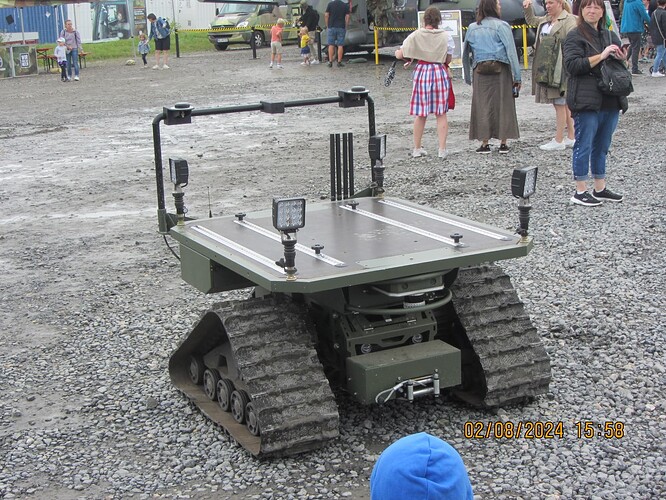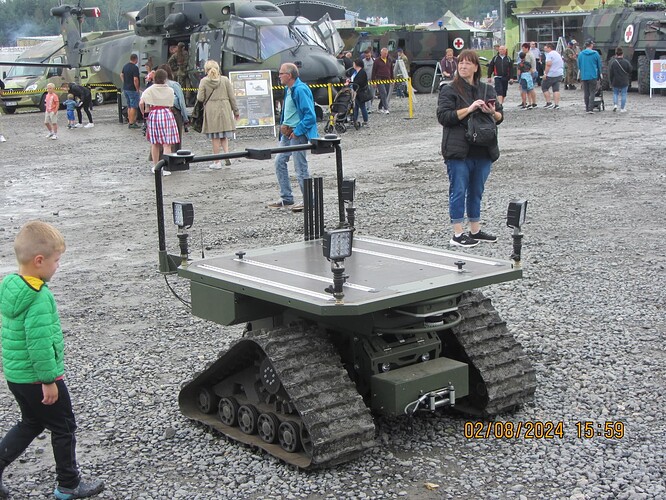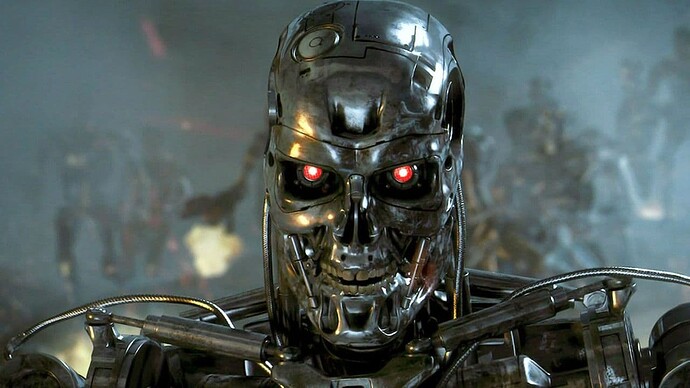With the increasing use of drones an UAV´s on the battlefield, I wonder what´s the difference between a drone and a UAV? Recently, Drones/UAV´s where spotted over Denmark. I don´t believe they were controlled from Russia.
Drone is a generic name for remote controlled vehicles be they aerial, naval or ground.
Olivier
Correct…drone is generic for basically any remote-controlled or autonomous robot although it’s losely applied. Drones are considered somewhat expendable which is why some vehicles that aren’t expendable or kamikazes aren’t called drones, but “remote operated vehicles.”
UAV = Unmanned Aerial Vehicle, but that term has fallen out of favor for UAS = Unmanned Aerial System. Don’t ask me why the name change to UAS because I don’t know…I guess it’s because a UAV can’t be a mothership (a single aerial vehicle) whereas UAS is the entire system with little drones coming from the mothership, hence UAV is not really used as much anymore compared to UAS that encompasses more aerial drones (drone swarms, single versus plural).
USV = Unmanned Surface Vehicle (a drone boat)
UUV = Unmanned Underwater Vehicle (a drone mini submarine)
UAP = Unexplained Aerial Phenomena = a UFO and not to be confused with the above.
It shows nicely the difference between British and American ways of naming things, too.
Whereas UAV comes across very much as an American term from about the 1960s or beyond: around then, they really, really began to like long descriptions that can be abbreviated rather than having a simple word for a thing.
The advantage of the American way is, of course, that if you know what an abbreviation stands for, you can also likely work out what it is or does. The advantage of the British way is that you have simpler names that are actual words you likely already know in another context.
The term ‘drone’ is also “scarier” than the bureaucratic abbreviation UAV or UAS.
The alarmist headline “The drones will hunt us in the future” wouldn’t work
as well when written like “The UAV’s will hunt us in the future”.
As far as I’m concerned a UAV is an RC aircraft with camera feedback to allow
the “pilot” to fly without having eye contact with the aircraft.
“Radio controlled model airplanes will be hunting us in the future” just sounds
silly, not scary at all.
Or the now less-common ROV, for ‘Remotely-Operated Vehicle, which remains a bit more common compared to USV for submersibles. ‘Drone’ has been popularized enough in the media to become the ‘generic’ term.
I wonder which catagory fits the load carrier from Diehl. UGV? Or the little brother of a Terminator?![]()
In SciFi we also have cyborg systems:
which have biological components - Partially Manned Vehicles?
We already have Optionally Piloted Vehicles, but really these could be dated back to the “Queen Bee” variant of the Tiger Moth of 1935. High-performance aerial targets became common post WW2 with the conversion of surplus fighter aircraft (Hellcats) into radio-control target drones while retaining the ability to be piloted when not in use as a target, these were also used as attack drones during the Korean War, and a rogue F6F-5K was arguably the winner of the Battle of Palmdale…
The converted B-17 and Liberator flying bombs used for Operations “Aphrodite” and “Anvil” required two-man crews for take-off and arming; after a successful hand over of control to the mother ship these were to parachute to safety - regrettably there was a high rate of fatalities associated with this.
Away from the air, the last pre-dreadnought battleship in service with the Royal Navy, HMS Agamemnon, was operated as a radio-controlled target ship from 1921 to 1926, but was crewed when not being shot at.
Cheers,
M
which will eventually be expanded into Partially Manned Systems
to be used when you need aggressive action on the battlefield
Amusingly, the B-17s used for this were somewhat difficult to get to crash as they were intended to; I believe there was a case where German soldiers found an ‘abandoned’ B-17 ditched in a field, only to have it go off when they investigated it.

I believe the best instance of such an occurrence was on the 28th March 1942 when the destroyer HMS Campbeltown, embedded in the caisson of the Louis Joubert drydock at Saint-Nazaire detonated somewhat later than planned. Although she had been thoroughly searched, the Germans had not found the 24 Mark VII depth charges (about 4.5 tons of Amatol) as these were buried in concrete in the bow forward of “A” mount which may have been mistaken for a simple reinforcement for the ramming… The estimated 250 casualties unfortunately included some French dockyard workers.
Cheers,
M




